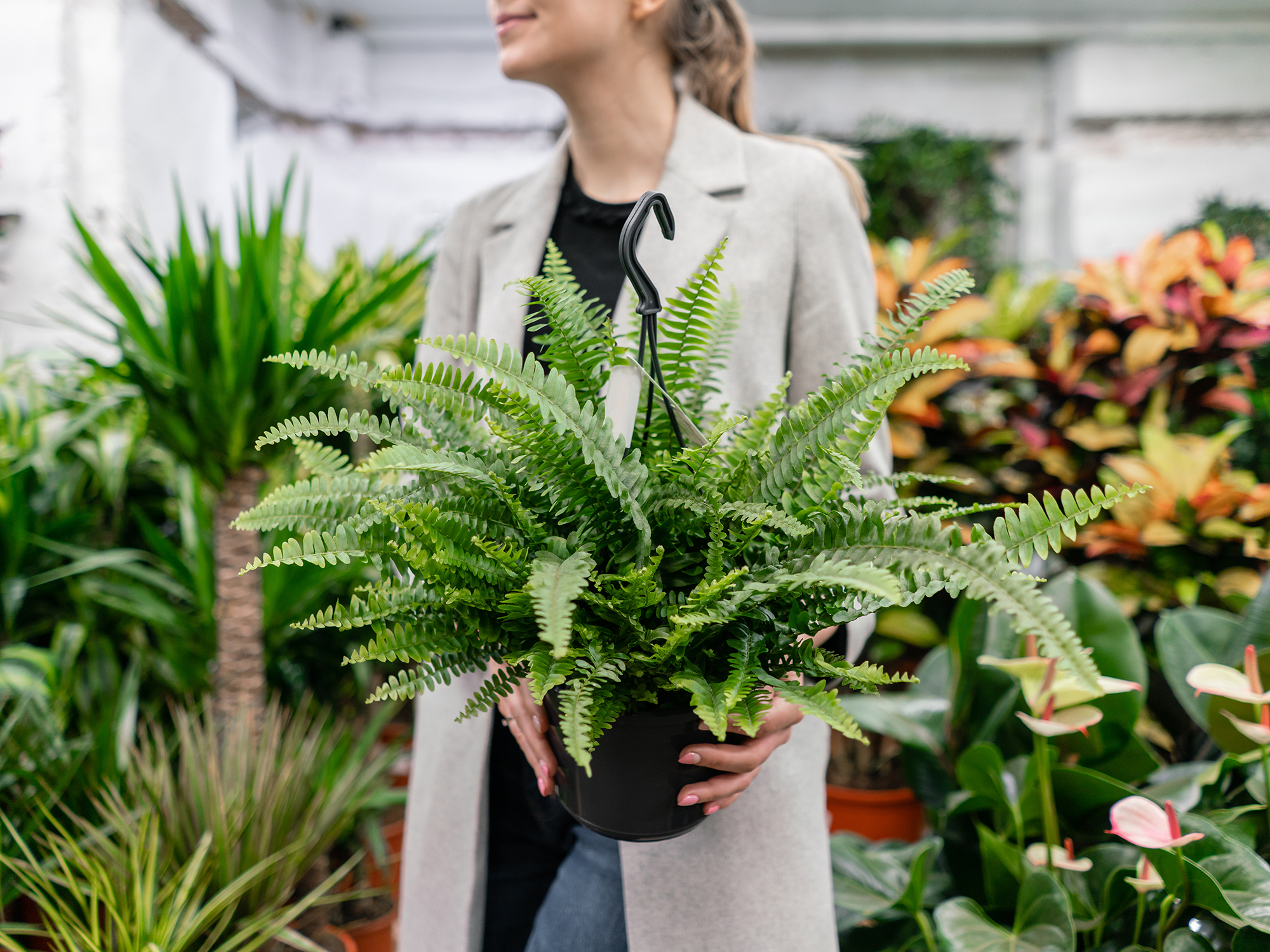

This article was originally featured on Bob Vila.
Whether you’re buying your first plant baby or nursing a houseplant obsession, bringing home a beautiful new houseplant is a thing of beauty. But nothing is worse than introducing a pretty new plant to your home only to discover you’ve brought home pests at the same time.
While most reputable greenhouses and nurseries regularly inspect their plants for insects and other diseases, bugs are a force of nature, so it’s always a good idea to take a quick look at your plant before bringing it home. Likewise, some plants give you signals they might not be the healthiest on the shelf. Here’s what to check on your houseplant before carting it back to a windowsill near you.
Look at the leaves
It makes sense that you’re looking for a houseplant that has lots of new growth and shiny green leaves. But be on the lookout for any wilting leaves or leaves that appear dry, brown, yellow, or speckled. Unhealthy leaves reveal if a plant has been stressed due to overwatering, underwatering, heat, cold, or—perhaps the greatest concern—houseplant insect infestation.
Houseplant pests can spread quickly, so even if the leaves appear perfect, it’s critical to inspect the underside of leaves for insects before bringing home any houseplant. Be on the lookout for sooty black spots, soft white bodies, tiny green flecks, brown spots, or anything that looks like it might creep or crawl. Insects like aphids can appear in a variety of colors and are often tiny.
Make sure leaves aren’t too dusty or spotted either. Properly cared for houseplants in a nursery or hothouse receive regular misting and dusting. Residue on the leaves from fertilizer or insecticide spraying usually is not something to be concerned about, since it can last long after treatment. Overhead spraying in commercial greenhouses is standard.
Study the stems
Similar to inspecting leaves, you can find signs of insect infestation along the stems of plants. Also be sure to look at the areas where the leaves meet the stems, a spot where insects often nest. Check in particular for scale, a round brown insect that forms a hard shell and is almost impossible to see on some brown-stemmed plants.
Scales look more like a growth on the plant than a crawling insect, so look carefully. If you notice it after you’ve brought your plant home, you’ll want to act fast to be sure to remove the scale.
Look for signs in the soil
Check the soil of your houseplant. Ideally, the first 2 inches of soil are dry but the plant has not been allowed to dry out completely. If it’s bone dry, you’ll want to water it as soon as you get it home. Most houseplants like to be watered when the first 2 to 3 inches of soil begin to dry out. Look for soggy soil as well, since overwatering can also be a problem and attract fungus gnats.
The soil should come up to about 1 to 2 inches from the top of the pot. More soil than this can indicate the plant was improperly transplanted. Less soil means the plant hasn’t been transplanted soon enough. Both of these can impact the health of your houseplant. Signs in the soil can show a plant has been overwatered, underwatered or transplanted incorrectly—all plant stressors. Stressed plants send out a signal to insects that they are weak and the bugs take advantage.
Assess the roots
Take a quick look at the base of your plant’s pot. At the bottom where the drainage holes are, you should see dirt. If you see roots, the plant is in need of a larger pot and is likely rootbound. This is not necessarily a reason to avoid buying the plant, but it means you probably want to go ahead and invest in a larger pot and potting mix before you leave the nursery.
Peruse the pot
Most houseplants are grown in large indoor greenhouses in plain plastic pots known as growers’ pots. Some growers also use peat pots or compressed biodegradable containers. Like the plastic pots, they are designed to grow the plant at the greenhouse with the expectation that the plant owner will transplant the plant to a new pot eventually.
The chances are that unless you’ve chosen an extremely slow-growing plant, you are going to need to transplant your houseplant from its current container fairly soon. You’ll usually want to size up by 2 inches in circumference. For example, if you buy a houseplant in a 6-inch pot, you’ll want to buy a new pot that has at least an 8-inch circumference. Make sure any pot you choose isn’t cracked and that it has drainage holes in the bottom so your houseplant does not sit in standing water.
Fall for only a few flowers
If your houseplant is flowering, look for one that has a few flowers, but lots of flower buds. A plant in full bloom is tempting, but when you buy it, the blooms will be fading soon, so it’s always a good idea to have one that is about to burst into flower.
Notice nearby plants
Do a quick check for the plants surrounding the one you plan to purchase. Do any of them look unhealthy or in need of watering? Check the leaves, stems, and soil of the plants in the immediate vicinity for insects, too. The chances are if most of the plants look healthy, they’ve been cared for and regularly inspected by the nursery staff.